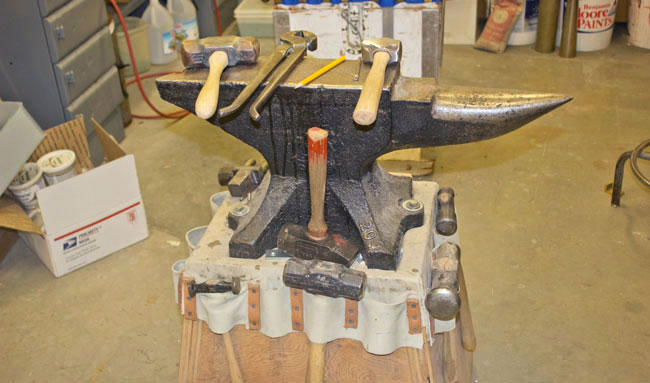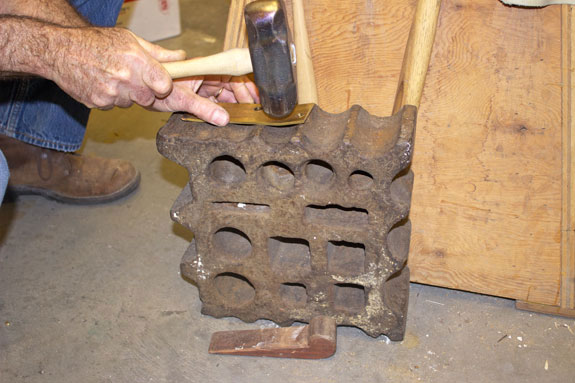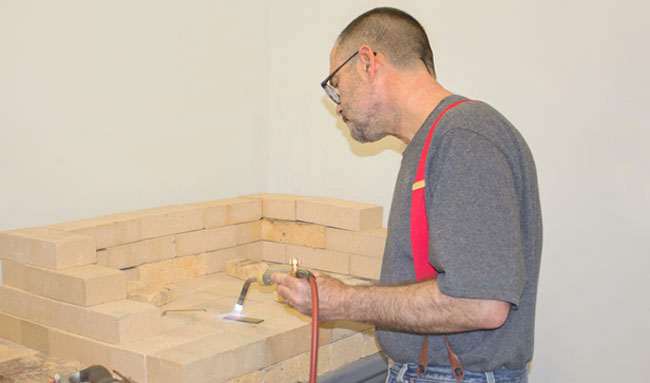In a Harvard Art Museums studio, two sculptors are practicing the art of invisibility. Peter Schilling, senior exhibits specialist, and Jill Comer, exhibit-assistant specialist, are sculpting mounts for around 600 works of art that will be on display when the Harvard Art Museums open in November.
Built to curators’ specifications, the new mounts are created using a variety of materials, such as brass, stainless steel, aluminum, and even fabric. The mounts can be as small as a thin wire, as in the case of jade carvings, or as large as 30-pound brass supports for the wings of a German triptych.
“We try to make the mounts as discreet as possible,” Schilling said. Sometimes the sculptors even paint the edges of the mount to perfectly match the work of art.
One of the best parts of the job, Comer and Schilling agreed, is the opportunity to carefully and powerfully connect with the individual works of art. Comer, who recently developed a mount for a small, Neolithic Chinese figurine, said the experience filled her with awe. “When I placed it on the table, it had perfect balance,” she said.
“It’s a constant challenge,” Schilling said. “But we’re actually very fortunate to handle the artwork so closely.”






